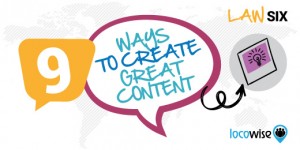Hours and hours are wasted every week on unproductive meetings. And that’s time that could be spent on other important business initiatives to better move a company forward. Because it’s not only an employee’s time that’s wasted but an employer’s money too. According to research, $ 25 million of company money are lost every day on unproductive meetings, resulting in a whopping total of $ 37 billion a year.
Of course many meetings are necessary in order to set and achieve goals, and get things done so you can’t get rid of them altogether. However, there are some ways to make them shorter, more productive and to-the-point.
To learn how, here are nine tips for highly productive meetings.
1. Send out an agenda beforehand.
If you’re the one spearheading a meeting, it’s important to make it very clear what exactly that meeting is going to entail, and to share these important details with the rest of the attendees. By making known what exactly the meeting’s main points are, people will know whether their attendance is necessary or not and what they should have prepared for it too. If everyone is prepared, then the meeting will be smooth and time-effective. To achieve this, create an agenda beforehand detailing what will be covered, how much time it will take and your goals, and email this out to everyone at least 24 hours before the meeting so people can prepare if they need to.
2. Invite only those necessary.
On average, people spend 31 hours in unproductive meetings every month. That’s precious time that could be spent on other projects and important work. Therefore, to reduce this number, make sure that you only invite the necessary people needed at a meeting in order to achieve its initiatives and goals. Amazon’s Jeff Bezos has a rule of thumb called the “two pizza rule,” which is to only invite the amount of people to a meeting that two pizzas can feed.
3. Have distinct roles.
After setting (and sending) the agenda and inviting the necessary attendees, make sure everyone’s roles are clearly defined, especially the meeting’s leader. It’s incredibly important to have a distinct team leader who will be conducting the meeting and making sure goals get achieved. Other important roles to assign include a note-taker, a time-keeper and a facilitator.
4. Watch the clock.
To make sure no time is wasted and meetings don’t drag on, be incredibly strict on time. And that goes all the way back to agenda-setting before the meeting. When setting your agenda, write out exactly what you’ll be talking about and how much time will be spent on each topic. Using this information, calculate a total of exactly how much time will be needed for the entire meeting. As a tip: try to keep them around 18 minutes. Research shows that people’s attention spans significantly drop any longer than that.
5. Have a standing meeting.
It’s important to keep people on their toes, especially in meetings. According to research, standing meetings are more creative, collaborative and productive than sitting ones.
6. Take notes — by hand.
Note-taking during meetings is incredibly important, not only for the meeting’s leader but for every member. And instead of using laptops, which can often serve as distractions, try taking notes by hand. According to research, typing notes can result in mindlessly writing anything that you hear, while writing notes by hand makes sure people are accurately listening and choosing the most important things to write down.
7. Make a “no cell phones” rule.
Today, smartphones can serve as major distractions. Whether it’s surfing the web or scrolling through Instagram, enforce a “no cell phones” rule to make sure everyone is fully engaged and attentive. Just take it from the White House: when President Obama was in office, staffers and meeting attendees wrote their names on sticky notes, which they attached to their phones and left in a basket at the beginning of Cabinet meetings.
8. Assign tasks at the end.
Every attendee should leave a meeting knowing exactly what is needed from them. Apple’s Steve Jobs called these “DRIs,” which stood for “Directly Responsible Individuals.” By assigning tasks and responsibilities to people and laying out concise understandings of what’s expected of them, productivity will be boosted and meeting goals will be much easier to achieve.
9. Send a follow-up email.
At the end of every meeting, the meeting leader should send out a follow-up email outlining everything that was discussed. Send this out on the same day that a meeting took place, and make sure every meeting attendee receives it. Typically, it should include what was covered, tasks given to various members and what next steps are.
Business & Finance Articles on Business 2 Community(62)







